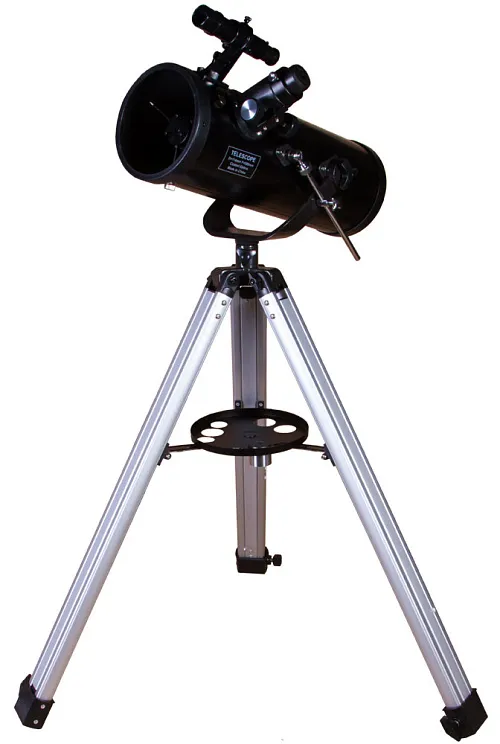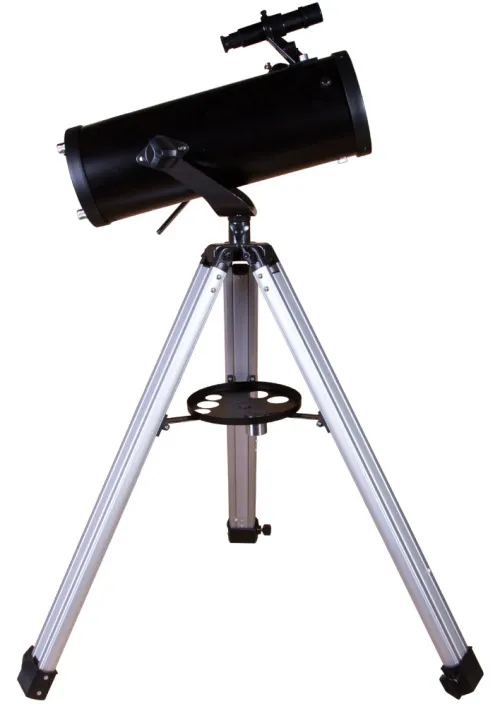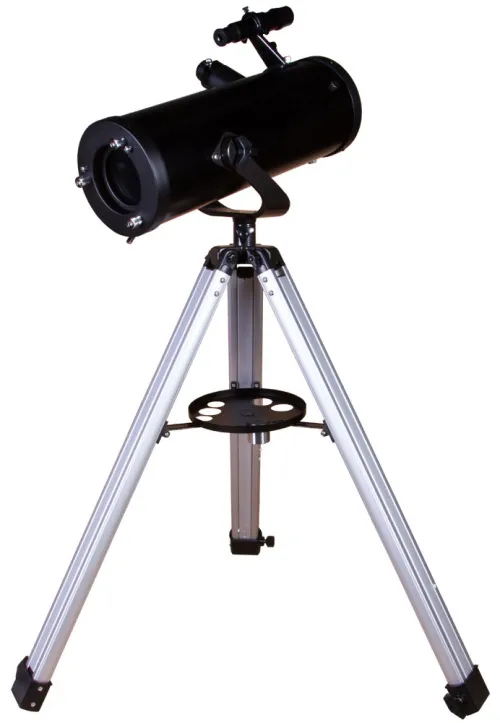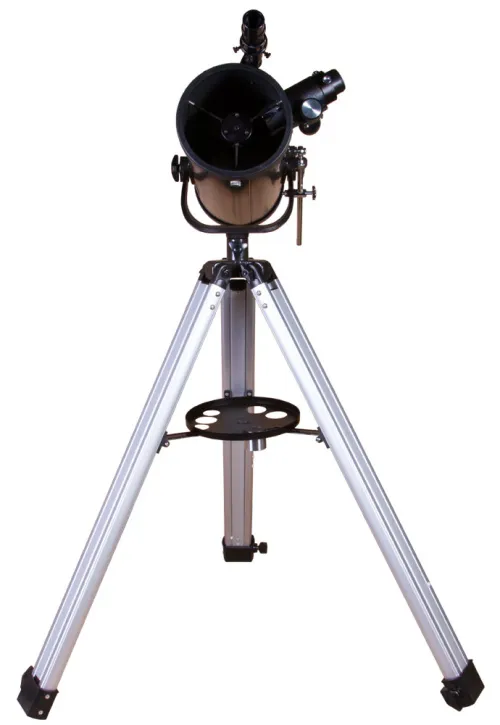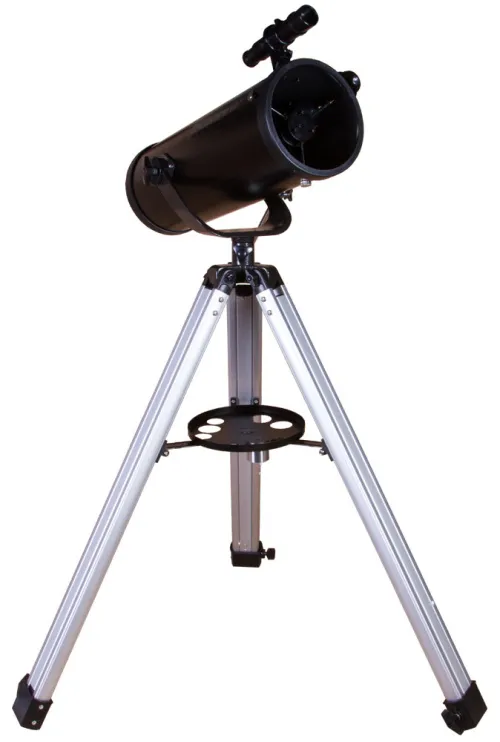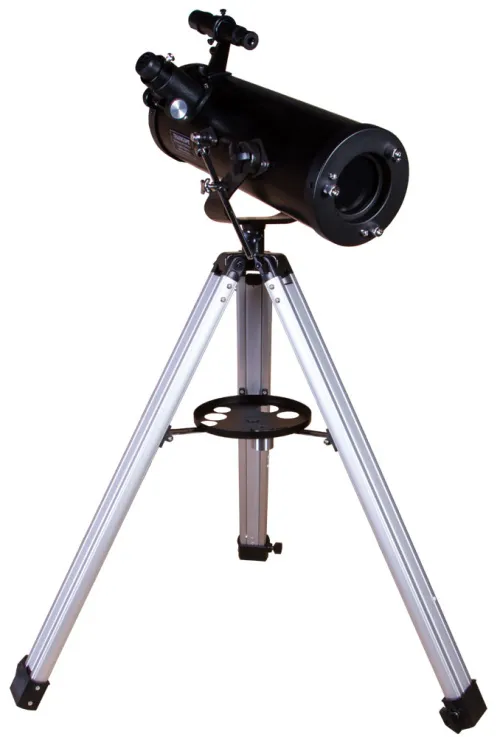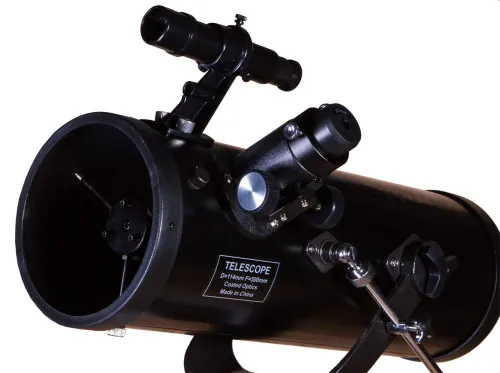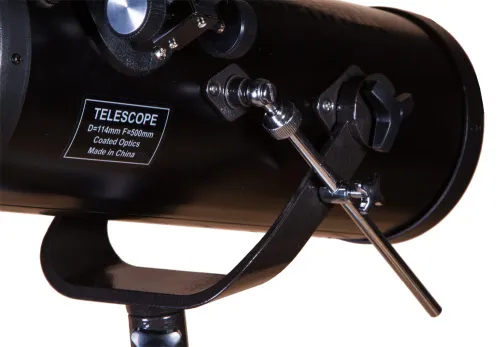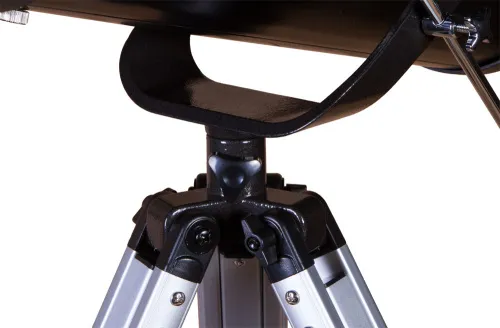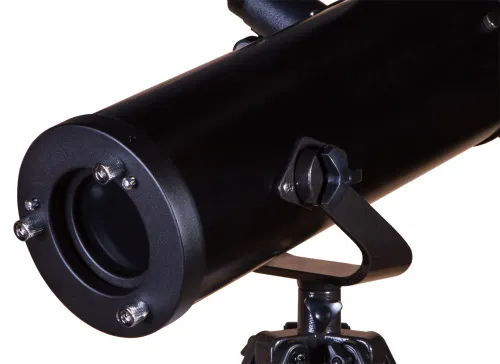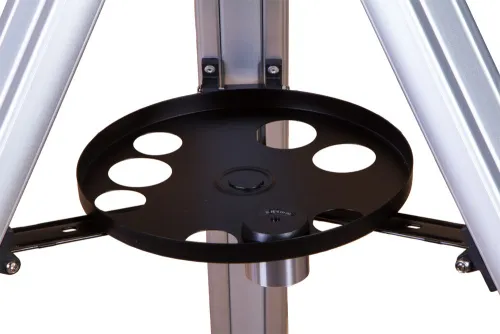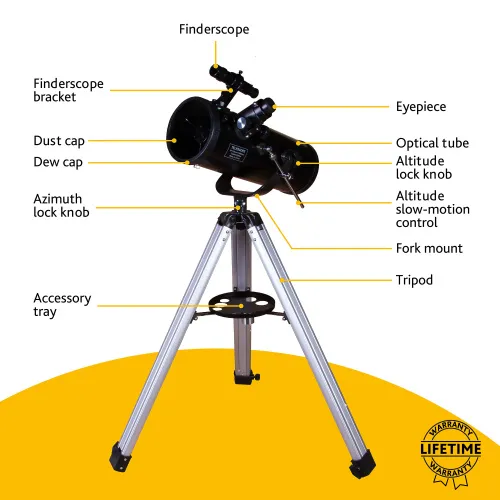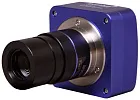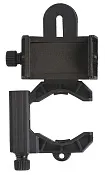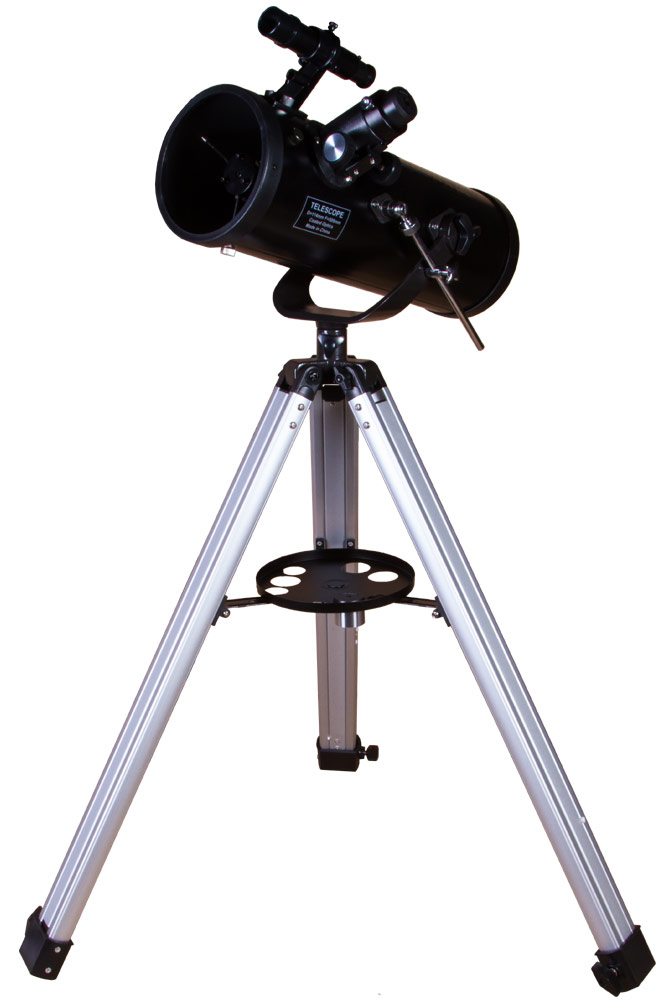Levenhuk Skyline BASE 120S Telescope
Newtonian reflector. Aperture: 114mm. Focal length: 500mm
| Product ID | 72852 |
| Brand | Levenhuk, Inc., USA |
| Warranty | lifetime |
| EAN | 5905555002323 |
| Package size (LxWxH) | 89x44x24 cm |
| Shipping Weight | 7 kg |
Levenhuk Skyline BASE 120S is a classic Newtonian reflector, ideal for deep-sky observations. You can see nebulae, double stars, globular and open clusters, galaxies – all the Messier objects and some objects from the NGC catalog can be studied. You will be able to see the Moon and the planets of the solar system. The telescope is designed for beginner astronomers, i.e. it should not be difficult to use for those who have not previously dealt with any advanced optics.
The primary mirror, which is 114mm in diameter, transmits sharp, clear, and detailed images. The telescope comes with the accessories that are necessary for observation, namely two eyepieces: a short-focus eyepiece provides 125x magnification and a long-focus eyepiece provides 25x magnification. Another accessory is a finderscope with 5x magnification that is designed for precise pointing at astronomical objects.
This telescope is easy to operate. The optical tube is mounted on an alt-azimuth mount that allows for moving the optical tube like an ordinary spotting scope – upwards, downwards, to the left, to the right. The mount adjusts on a standard aluminum tripod, stable even on rough surfaces. You can install an accessory tray on a tripod.
Features:
- Classic Newtonian reflector on an alt-azimuth mount
- Primary mirror diameter is 114mm
- Suitable for beginners
- Ideal choice for deep-sky exploring: nebulae, galaxies, and star clusters
- You can observe all Messier objects and the brightest NGC objects
The kit includes:
- Telescope optical tube
- Alt-azimuth mount
- Aluminum tripod with an accessory tray
- 5x24 optical finder scope
- SR4mm (125x) eyepiece
- H20mm (25x) eyepiece
- User manual and lifetime warranty
| Product ID | 72852 |
| Brand | Levenhuk, Inc., USA |
| Warranty | lifetime |
| EAN | 5905555002323 |
| Package size (LxWxH) | 89x44x24 cm |
| Shipping Weight | 7 kg |
| Optical design | reflector |
| Optical scheme | Newtonian |
| Optics material | optical glass |
| Optics coating | standard |
| Primary mirror diameter (aperture), mm | 114 |
| Focal length, mm | 500 |
| Highest practical power, x | 228 |
| Aperture ratio | f/4.4 |
| Limiting stellar magnitude | 12.38 |
| Eyepieces | H20mm (25х), SR4mm (125х) |
| Eyepiece barrel diameter, in | 1.25 |
| Finderscope | optical, 5x24 |
| Tripod | aluminum |
| Tripod height (adjustable), mm | adjustable |
| Accessory tray | ✓ |
| Telescope control | manual |
| Mount | alt-azimuth, AZ2 |
| Optical tube material | aluminum |
| User level | beginners |
| Assembly and installation difficulty level | easy |
| Observed object | deep-sky objects |
Convenient diagrams that describe how to install additional accessories on refractors and catadioptric telescopes
Find out how to assemble a telescope on an example of the Levenhuk Skyline 90x900 EQ telescope
This short guide will help you avoid typical mistakes and learn more about telescope and mounting types
The basics of astronomical observations for beginners
In this article we have gathered answers to some of the most frequently asked questions about telescopes
The most interesting celestial objects you can observe with Levenhuk telescopes
How telescopes work?
You can actually perform observations from your balcony!
All about telescope sizes, types, magnification, and mounts
Learn how to set up and use the telescope properly
Astronomy in light-polluted skies. Find out what you can observe in the city
Read an interesting comprehensive article on telescopes for little astronomers
The pictures are made with Levenhuk telescopes
Celestial objects you can observe with telescopes of different apertures
Colored and vivid images of galaxies, planets and star clusters entrance everyone who is fascinated by boundless space
Find an interesting review on the history of the changes to a refracting telescope
To make the process of choosing a telescope easier, we will tell you about the characteristics of the most popular types of telescopes today
Learn everything you need to know about refractor telescopes to make the right choice

